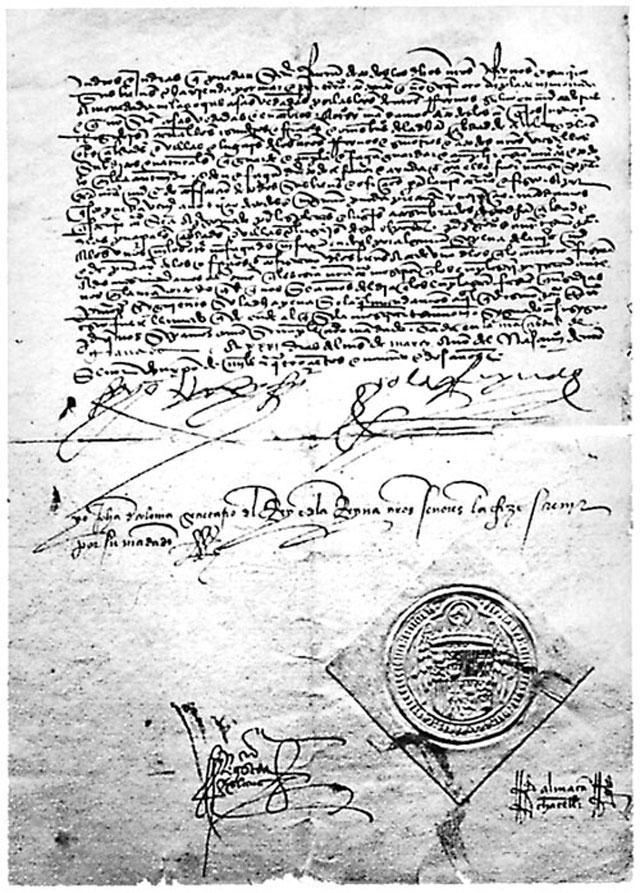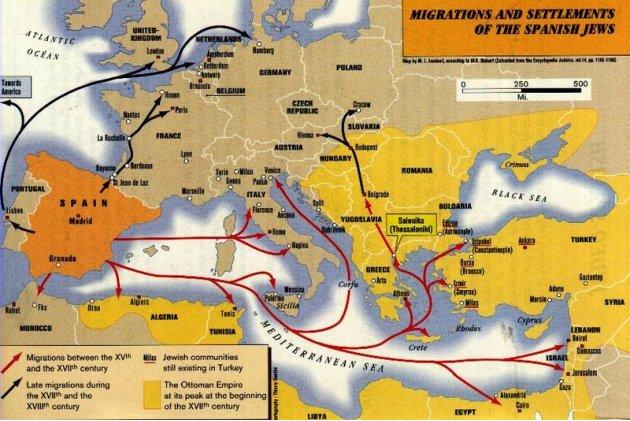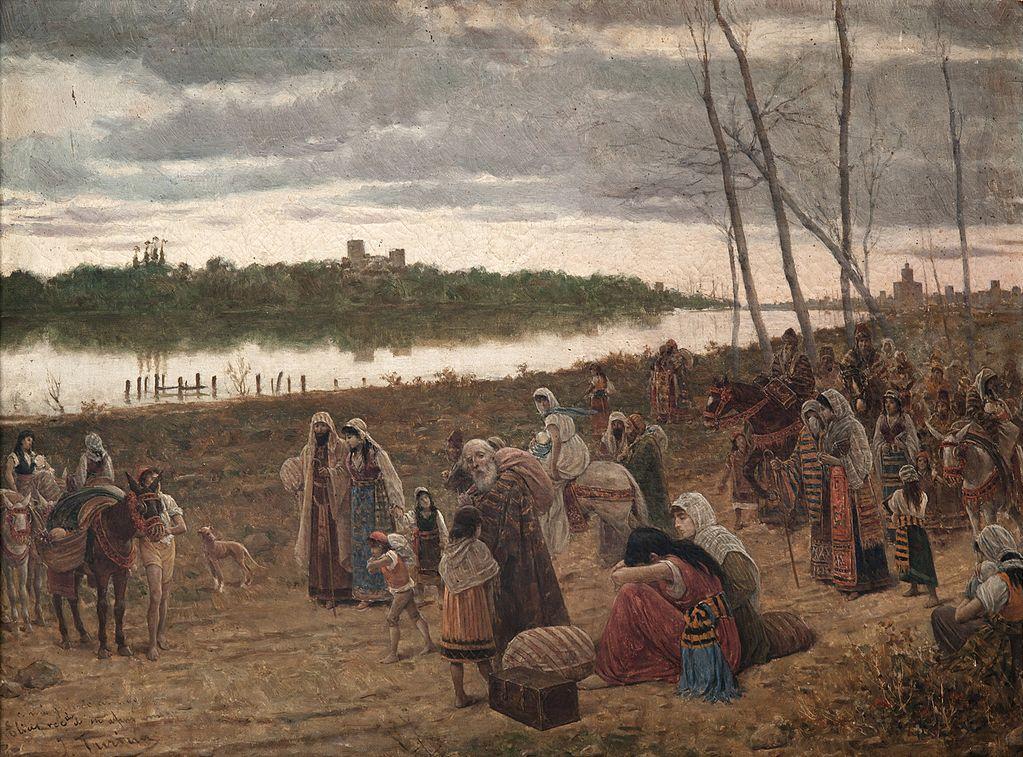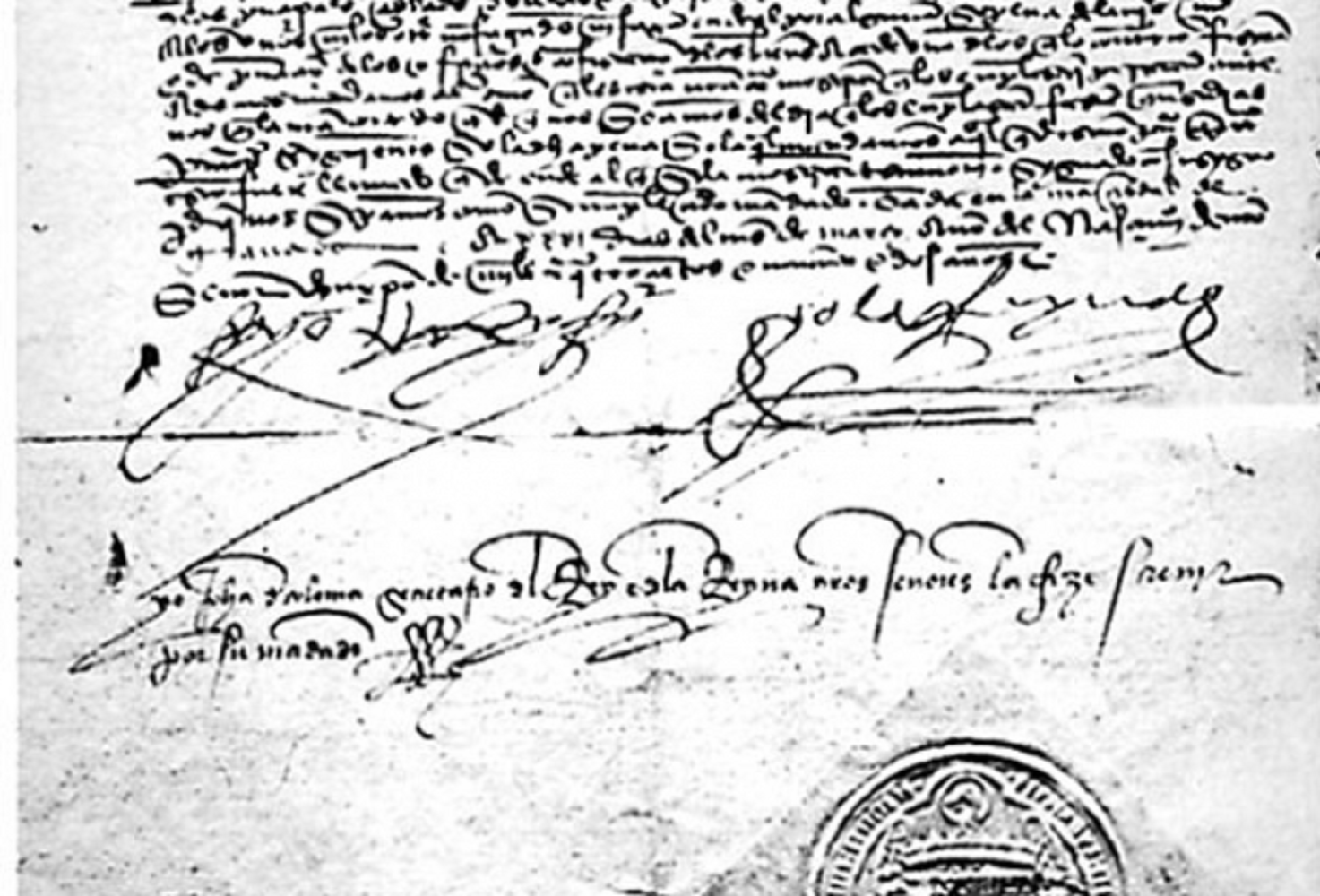Monday 31st July this year marked 525 years since the deadline that the chancellery of the 'Catholic Monarchs', Ferdinand and Isabella, had given the Jewish community to completely leave Spanish territory expired. A controversial decree that put an end to a very important cultural and religious community that had arrived on the Iberian peninsula thirteen centuries earlier. The sarcophagi of the necropolis of Tarraco (Roman Tarragona), for example, reveal that there was a Jewish community living in Roman Hispania from the 200s. For 1,300 years, the Jewish communities formed an active part of the history of the peninsula. The expulsion of the Hispanic Jews -the Sephardic diaspora- would become the most tragic episode in the peninsula's medieval history. Forced to sell off their property and belongings, they ended up spread around several Mediterranean and Atlantic ports and would, with a lot of effort, refound communities that, in some cases, would manage to maintain their original language.

Decree of Expulsion, signed by the Catholic Monarchs / Source: Wikimedia Commons
Where did the Catalan Jews come from?
At the start of our era, Palestina -the name that its Roman rulers had given to the nation of Israel- was the most unsettled province of the Empire. It was something akin to the more recent situations in the Basque Country with respect to Spain or Northern Ireland with respect to Great Britain. A conflict that the Romans, with their usual brutality, solved with a monstrous repression along with a formidable expulsion. The Jewish diaspora became a wide-reaching phenomenon and a good part of the Israelite nation would end up spread around the great coastal cities of the Roman Mediterranean. The archaeological evidence confirms that Tàrraco (Tarragona), Emporion (Empúries) and Dertosa (Tortosa) all had large Israelite communities. The medieval Catalan Jewish community, like the rest of Jewish communities around the western Mediterranean, had origins that dated back to the period of Roman rule.
How do they become Catalan?
What is not so clear is how they resisted the great historical rupture represented by the Arab invasion. We know that once the Roman Empire dissolved, the provincial oligarchies, who kept the economic power for themselves, and the Visigothic oligarchies, who took the political and military power, dictated very restrictive, almost persecutory, laws against the Israelite communities. We also know that the Arabs -paradoxes of history- restored the important role of Jews in Spanish society. Naturally, in the areas of Muslim rule. So we can understand the importance they acquired in Turtusha (Tortosa) or in Lareda (Lleida). But we can hardly imagine what happened to those in Tàrraco or those in Emporion, cities that were abandoned during the Islamic period. The Jews of Girona or of Barcelona of the year 1000 would have come from the southern reaches of the Frankish Empire like so many other proto-Catalans of that period.
Who were the Catalan Jews?
The medieval Catalan Jews spoke Catalan. Medieval Catalan, obviously. From Perpignan in the north to Valencia in the south. And this means that the Israelite communities were an inseparable part of society as a whole. With the peculiarity that, while the Christian elites used Latin as their language of culture, the Jewish elites maintained an archaic Hebrew limited to the areas of writing and the liturgy that, like the Latin of the Christians, was only known by the literate minority. The familial and vehicular language of the medieval Catalan, Valencian and Mallorcan Jews was the same Catalan as that of the rest of society. That of the homes, the streets, the workshops and the businesses of all the calls - the Jewish neighbourhoods. This raises a question: why didn't the Catalan-speaking Jews expelled in 1492 preserve their language, unlike the Spanish-speaking Jews which led to the birth of the Judeo-Spanish language, also known as Ladino? Or to say it another way: why is there not a Catalan Sephardic language?
The pogroms
In 1492, the Catalan, Valencian and Mallorcan Jewish communities were decimated. Before the pogroms of 1391, it is estimated that the Jewish population in Catalonia was around 50,000 people, some 15% of the total population at the time. However, a century later, it was down to 8,000 people. Although it is true that in those monstrous pogroms hundreds of families died, it is also true that the society's brutal anti-Semitic feelings, in a general landscape of lack of culture and of superstition aggravated by a dramatic social, political and economic crisis, had severe effects on the Israelite community. In Tàrrega, near Lleida, more than 300 members of the local Israelite community, 20% of the total population, were murdered. And in Girona, sources report that the stairs to enter the Jewish quarter became a macabre waterfall of blood and entrails. But later conversions, forced or not, hit the Jewish community as much or more than the bloody pogroms.

Map of the Sephardic diaspora / Source: Archives of El Nacional
The Sephardic diaspora
The most recent historiographic research estimates that the decree of expulsion by the Catholic Monarchs meant, over the whole territory, the forced exile of between 75,000 and 100,000 persons. The same studies estimate that two thirds of that total would have come from the Crown of Castile; the remaining third, from the Crown of Aragon, that is, between 25,000 and 33,000 persons, of whom about 8,000 would have come from the Principality of Catalonia. The Castilian Jews emigrated following various routes. The majority looked for refuge in the trading ports of the eastern Mediterranean, then under the control of the Ottoman empire. A minority emigrated to the Netherlands, after a brief stay in Portugal. In all cases they found themselves in very different linguistic environments compared to their vehicular Castilian Spanish. The desire to reconstruct their vanished micro-societies of Sepharad, the Iberian peninsula, meant that the Sephardic language, Ladino, survived in these communities.
The Catalan diaspora
However, the Catalan-speaking Jews emigrated, generally, to the main commercial centres of the Italian peninsula. And although in that period modern Italian did not exist -being an invention that appeared after the unification of Italy in 1860-, what did exist was a series of languages that came from Latin, very similar to each other and very similar to Old Catalan too. This explain why there doesn't exist a Catalan Sephardic language. The Catalan Jews that settled in Rome, in Livorno, in Lucca, in Florence, in Pisa or in Genoa would change, without noticing it, to speaking the local languages of Lazio, of Tuscany or of Liguria with relative ease and speed. And they would leave no traces beyond the name of some street, like the Via Catalana in Rome's Jewish quarter. Name that reveal the existence of Catalans that were brutally forced to leave their homes, abandon the graves of their ancestors and sell off their heritage to be able to, simply, carry on living.

Expulsion of the Jews from Seville, painting by Joaquín Turina Areal. The Interpretation Centre of Seville's Jewish quarter / Source: Wikimedia
Main image: Signature of the Decree of Expulsion by the Catholic Monarchs, painting by Emili Sala i Francés / Source: Archives of El Nacional

